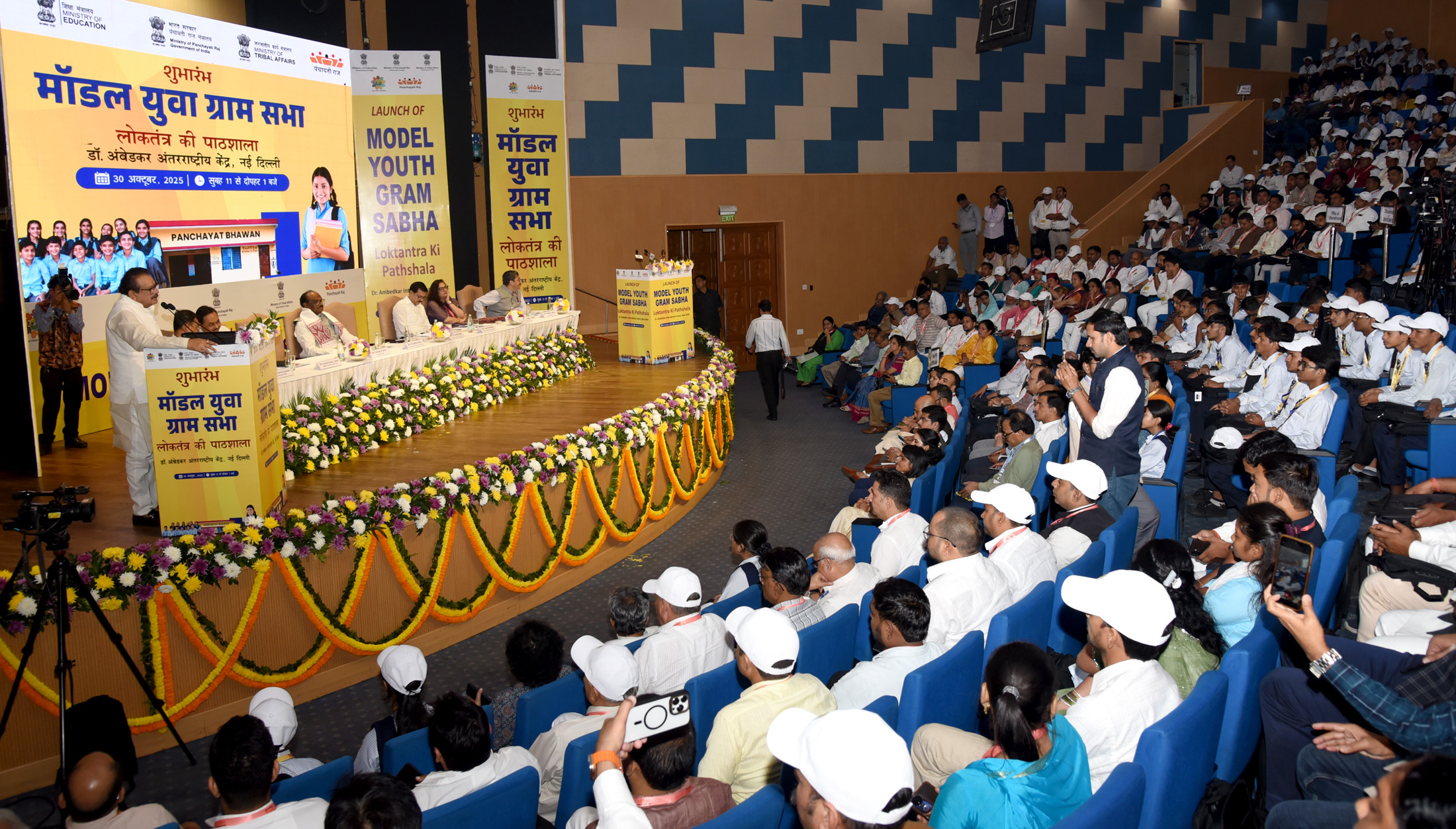India has taken a bold step to bring the essence of local governance right into classrooms. A new program aimed at school students kicked off in the capital, drawing together key government departments to make democracy a lived experience for the younger generation. This effort seeks to shape confident individuals who can contribute meaningfully to the country’s progress.

What the Model Youth Gram Sabha Brings to Schools
The program fits perfectly with the goals of the 2020 education policy, focusing on learning through doing rather than just reading books. It will reach more than a thousand educational institutions, covering special residential schools for tribal students, centrally run model schools, and regular state-run ones. Children will get to simulate village council meetings, discuss local issues, and practice making group decisions. This hands-on approach helps them grasp how communities solve problems together and why every voice matters in a democracy.
During the inauguration, leaders highlighted how such activities build essential life skills. One minister stressed that achieving a developed nation by the middle of the century depends on raising youth who value and protect democratic processes. He even proposed extending similar setups to city neighborhoods, allowing urban kids to explore ward-level decision-making and community roles.
Voices from the Launch Event
Another speaker, drawing from his own roots in a remote tribal area, shared how local leadership can change entire villages. He pointed out that traditional tribal ways of living in balance with the environment teach important lessons about sustainability that everyone can learn from. The initiative, he added, bridges classroom lessons with real-world democratic practices, encouraging students to think, discuss, and take responsible actions.
A senior official from the panchayat ministry explained that many national challenges find answers at the village level through these local bodies. By involving students early, the program instills values like openness, duty, and answerability. He believes combining book knowledge with practical involvement makes education more engaging and tied to societal needs.

The education department head described the timing as ideal for introducing children to the workings of rural self-government bodies. Through this, participants develop teamwork, guiding abilities, and a sense of belonging to their surroundings. It promotes active involvement in society and supports overall mental growth, turning out citizens who are ready to lead with assurance.
How the Program Unfolds in Classrooms
Along with the main launch, organizers released a detailed guidebook for teachers and an online platform dedicated to the initiative. These resources will help schools organize sessions smoothly, track progress, and share success stories. The portal acts as a central hub for materials, ideas, and feedback, ensuring the program runs effectively across diverse regions.
Schools selected for the rollout include those known for holistic development, like the Jawahar Navodaya Vidyalayas, and specialized ones for tribal children called Eklavya Model Residential Schools, besides numerous government schools in states. This wide coverage ensures students from various backgrounds get equal opportunities to engage with governance concepts.
Building a Foundation for Future Governance
The event saw a large gathering of over seven hundred people, ranging from eager schoolgoers and their mentors to chosen village representatives and state-level panchayat experts. Such diverse participation underlined the collaborative spirit behind the effort. Everyone present agreed that empowering youth with democratic tools today paves the way for stronger local institutions tomorrow.
Activities under the program encourage children to identify community needs, propose solutions, and understand budgeting basics at a local level. For instance, they might debate improving school facilities or organizing cleanliness drives, mirroring real village council agendas. This not only sharpens critical thinking but also fosters empathy and inclusivity among peers.
Teachers play a crucial role in facilitating these mock assemblies, guiding discussions without dominating them. The training module equips them with strategies to handle varied student inputs and link sessions to curriculum topics like social studies and environmental science. Over time, these experiences are expected to boost public speaking confidence and analytical skills in participants.
Long-Term Vision for Youth Engagement
Looking ahead, the initiative aims to make every child an active builder of a prosperous India. By familiarizing them with grassroots mechanisms, it prepares a generation that respects decentralized power and contributes to it. Extensions to urban settings, as suggested, could adapt the model to city councils, broadening its impact.
State departments handling panchayats and rural development institutes are geared up to support implementation. They will conduct workshops, monitor outcomes, and refine approaches based on ground feedback. This ongoing evaluation ensures the program evolves to meet changing educational and societal demands.
In essence, this nationwide push transforms abstract ideas of democracy into tangible classroom realities. It nurtures leaders who are informed, responsible, and committed to collective welfare. As more schools join in, the ripple effects on community participation and youth empowerment are bound to grow stronger.
With tools like the dedicated portal and comprehensive guides, educators have everything needed to inspire the next wave of civic-minded individuals. The focus remains on creating enjoyable, meaningful learning journeys that stay with students long after they leave school.
